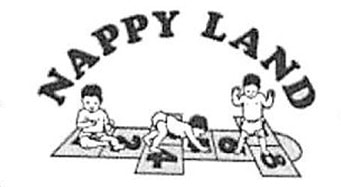CI JI Family Pty Limited v National Australian Nappies (NAN) Pty Limited [2014] FCA 79
In a recent Federal Court decision, it was found that having a registered trade mark, did not protect the trade mark owner from other legal action, when using its own registered mark.
In this case, the trade mark owner was found, despite owning the registered trade mark in the dispute, to have misled or deceived the general public, and passed off its goods as another company’s goods.
The judge awarded $25,000 in damages to the other party, and will issue Court orders to prevent the trade mark owner’s conduct from continuing.
This case highlights that simply owning a registered trade mark, does not eliminate the need for careful legal strategy, in avoiding compliance issues and costly legal disputes.
Facts of the Case
The case involved two opposing sides:
The ‘Plaintiff’: CI JI Family Pty Ltd and Luong Huynh Ngo
The ‘Trade Mark Owner’: National Australian Nappies Pty Ltd and Nhut Thang Ho
The Plaintiff and the Trade Mark Owner were originally in business together, as a partnership between Mr Ho and his company, and Mr Ngo.
- That partnership registered a New South Wales (NSW) business name Nappy Land in July 1997, and traded with the logo (the logo having no spaces):

- Mr Ho and Mr Ngo dissolved the partnership in 1999 and Mr Ngo took over the original trading company, trading under the original business name and logo.
- Meanwhile, in March 1997, Mr Ho registered a separate business, National Australian Nappies (NAN), and business names Nappy Land in Victoria, Queensland and South Australia, and registered the trade mark illustrated below (the logo having a space):

- When the partnership was dissolved in 1999, the Plaintiff and the Trade Mark Owner entered into a verbal agreement (‘1999 Agreement’), presumably, that the Plaintiff would trade in NSW, using the original business name and logo, and the Trade Mark Owner would trade outside of NSW as Nappyland with its registered trade mark. If the Trade Mark Owner started to trade in NSW it would not use a name or mark similar to the Plaintiff’s mark.
- From at least mid-2013, the Trade Mark Owner started to trade in NSW in essentially the same way it did in other States and Territories.
The Plaintiff’s Case against the Trade Mark Owner
The Plaintiff made three complaints against the Trade Mark Owner, namely that it:
(a) Breached the 1999 Agreement that it would not trade in NSW in a way that would confuse the Plaintiff’s customer base;
(b) Breached Section 18 of the Australian Consumer Law, and misled or deceived customers; and
(c) Committed a tort of passing off, by causing a loss to the Plaintiff, when trading on its established reputation, and deceiving customers as to the origin of the goods.
Court Decision
The residing judge, Flick J, assessed the three complaints as follows:
For the Plaintiff’s claim, that the Trade Mark Owner breached the 1999 Agreement, to succeed, it had to prove:
(i) that the 1999 Agreement existed,
(ii) that it satisfied the requirements of contract formation, and
(iii) that it was breached.
Flick J was not satisfied, based on the evidence presented by both sides, what the agreed terms of the contract were, and that it met the requirements of contract formation.
The Court’s finding was primarily based on the 1999 Agreement not being acknowledged in writing.
When both sides presented evidence as to what was agreed, they provided terms that most favoured their own position. The English language difficulties of both parties meant, that in cross-examination in Court, they contradicted themselves.
The judge was not clearly satisfied that the parties agreed to exclusive territories, only that the Plaintiff would undoubtedly have wanted that.
The Plaintiff could not prove, to the satisfaction of the Court, the terms of the alleged agreement, and that the Trade Mark Owner’s trading in NSW had breached it.
The Registered Trade Mark as a Sword or a Shield
Ordinarily, trade mark registration operates as a shield.
The protection provided by the Trade Marks Act 1995 (Cth), provides that the registered owner has the exclusive right to use its mark, or authorise others to use it (section 20(1)).
That right does not give a trade mark owner a licence to universally breach other laws, and confuse consumers, merely because it is the protected owner of its own mark. To do so, would be to wield trade mark registration as a sword.
The Trade Mark Owner submitted to the Court, that it having the registered trade mark in the dispute was a complete defence to the Plaintiff’s other legal claims. The Judge’s finding on this defence was [34, 38]:
‘The argument so broadly expressed is rejected. (…) The rights conferred upon the registered owner of a trade mark do not extend to a licence to engage in conduct which is misleading or deceptive or to engage in conduct which constitutes a passing off’
As such if the Plaintiff could satisfy the Court that other laws had been breached, it was up to the Trade Mark Owner to defend them.
Misleading or Deceptive Conduct and Passing Off
Ultimately, Flick J found that the Trade Mark Owner had breached the two other laws despite it having the registered trade mark.
To show that the Trade Mark Owner had breached section 18 of the Australian Consumer Law, the Plaintiff had to show that the conduct did not merely cause confusion as to the current state of affairs. Rather, that consumers in that particular market were, or would likely have been misled or deceived by the way trading occurred.
Flick J was satisfied, based on the evidence presented, that at least some customers were actually misled as to who was operating the business. Indeed some consumers asked the Trade Mark Owner if they were “the same business” as the Plaintiff.
While the interpretation of section 18 has many legal nuances, an objective assessment by the residing Judge also showed that any consumer in that market would likely be misled in having to distinguish “Nappy Land” from “Nappyland”, particularly when the business names were spoken.
To show that the Trade Mark Owner had committed the tort of passing off, the Plaintiff had to show that it suffered loss or damage to its goodwill, based on misrepresentations of the Trade Mark Owner. Flick J was satisfied that the way the Trade Mark Owner targeted customers, and represented itself, made it seem like they were aligned with the Plaintiff. That conduct caused the Plaintiff loss as to acquiring potential customers for its business.
Court Orders
Flick J noted the difficulty in coming up with appropriate orders based on the breaches, but stated that where the Plaintiff had suffered loss, there was an obligation to give a remedy. In an example of “judicial estimation” Flick J awarded damages of $25,000. Flick J will also provide consent to orders that limit the offending conduct in the future, when orders have been agreed between the parties.
Lessons from the Decision
The important points to draw from this case are:
- Agreements should always be put in writing, and drafted carefully to best reflect commercial imperatives;
- Intellectual property law is complicated, and careful legal and commercial planning should always be undertaken, to ensure compliance with all laws affecting transactions;
- Having a registered trade mark is not a defence to other related legal and intellectual property claims.
Pointon Partners have extensive experience in drafting agreements, and the registration and defence of trade mark and intellectual property claims. We incorporate our understanding of many areas of law in assisting in transactions, to give effect to commercial imperatives.
If you are planning operations or entering into a new transaction, with an Intellectual Property or Trade Mark component, please feel free to contact David Mazzeo on (03) 9614 7707.
[email_link]




